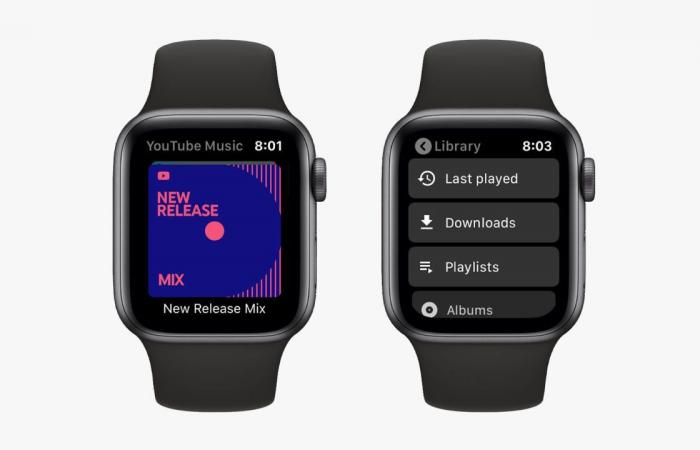This is noticeable for several reasons. For starters, Google has been working on rolling out a number of integrations for YouTube Music. Earlier this week, YouTube Music on Android TV received some major improvements. Back in August, Google made it so that you can play personal playlists from YouTube Music using the Google Assistant. As you’d expect, in both cases, Google prioritized its own platforms first. However, this is not the case with Wear OS.
Usually, Big Tech tends to roll out new features and updates to its own platforms first. For example, Android users will be the first to get a more robust set of third-party integrations with the Google Assistant. iOS users will have to wait. And Apple is Apple. They know it will prioritize its own ecosystem first – to hell with everyone else. Because of this, it’s a pretty big move that Google is releasing a YouTube Music app for the Apple Watch first.
But it is not Super surprising given the state of the smartwatch market. On the one hand, you have the Apple Watch. It’s by far the most popular smartwatch with a market share of between 50 and 55% depending on which research agency is doing the math. This is often surprising given that 74% of phones worldwide run Android and the Apple Watch only supports iOS. In the first quarter of 2020, smartwatch sales even rose 20%, with Apple, Samsung and Garmin benefiting the most. Wear OS … not so much. According to 9to5 Google, its market share fell from 23.7% to 22.6% in the first quarter of this year, although more Wear OS watches were sold in 2020 than in 2019.
However, this means that iOS users often only choose the Apple Watch as it really is the best smartwatch option for them. The same is not true for Android users. Smartwatch options for Android are much more fragmented, and for years there hasn’t been a true Apple Watch alternative that Android users could really rally behind. Samsung got the closest, and its newest flagship, the Galaxy Watch 3, is likely the only Android smartwatch that can keep up with Apple from head to toe. The thing is, it’s not running Wear OS. It runs Samsung’s proprietary operating system, Tizen, and It saves its best features for Samsung users and disadvantages non-Samsung users.
This means that Android users are often split between Samsung and fitness-focused smartwatches, which also run their own operating system, including options from Garmin and Fitbit. In fact, the Fitbit Sense is the only other Android-friendly flagship smartwatch that can compete with the Apple Watch, which in turn doesn’t run on Wear OS.
While 2019 was a little lackluster when it comes to new flagship smartwatches, 2020 was a whole different story. Samsung has prevailed with its Galaxy Watch 3. Fitbit apparently did a miracle out of nowhere with Sense, Versa 3, and Inspire 2. Both companies managed to catch up with Apple and gain US Food and Drug Administration approval for clinical electrocardiogram functions. Garmin has released the Forerunner 745, and Polar is redesigning its Vantage line and bringing out a great entry-level smartwatch with the Unite. Wear OS versus crashing the bed completely.
Although Qualcomm is introducing a new Snapdragon Wear 4100 chip designed to enhance the Wear OS watch experience, only one smartwatch is available this holiday season: Mobvoi’s TicWatch Pro 3. Fossil, the most famous manufacturer of Wear OS watches, is bringing a slightly cheaper version of its gen 5 series of watches powered by the latest generation processor, the Snapdragon Wear 3100. This means we’ll likely see real advancements in Wear OS watches by the spring of next year. The updates Google released for Wear OS in the fall were overwhelming. They focused more on tweaking the user interface than enabling the advanced features we expect from flagship smartwatches.
It’s not that Google doesn’t see the value of wearables. The company’s acquisition of Fitbit is proof of this, as is all the lip service that pays off for ambient computing. It’s just that real improvements to Wear OS are going to take time. Hell, it might even be easier at this point to scrap it and start over if regulators approve the Fitbit deal.
Meanwhile, even Google seems to know that there is little to be gained by putting Wear OS first. That’s sad because it just means that Android users, especially those without Samsung phones, have the fewest options when it comes to a great smartwatch. Unfortunately, it doesn’t look like that will change anytime soon.
These were the details of the news Even Google puts Wear OS in second place for this day. We hope that we have succeeded by giving you the full details and information. To follow all our news, you can subscribe to the alerts system or to one of our different systems to provide you with all that is new.
It is also worth noting that the original news has been published and is available at de24.news and the editorial team at AlKhaleej Today has confirmed it and it has been modified, and it may have been completely transferred or quoted from it and you can read and follow this news from its main source.

